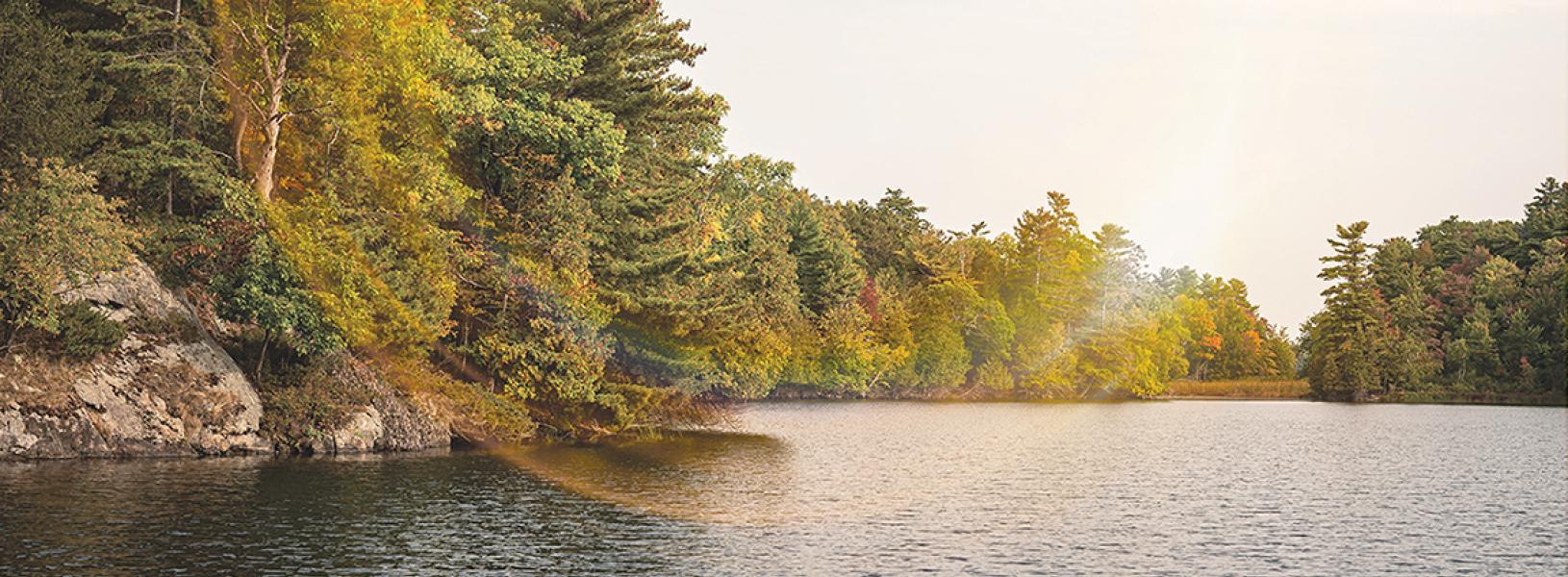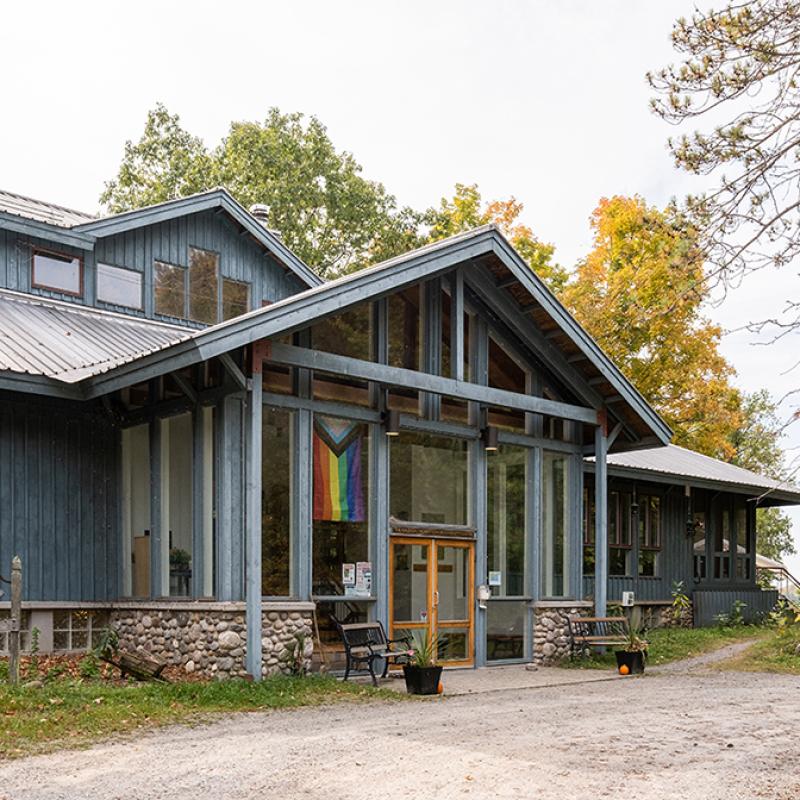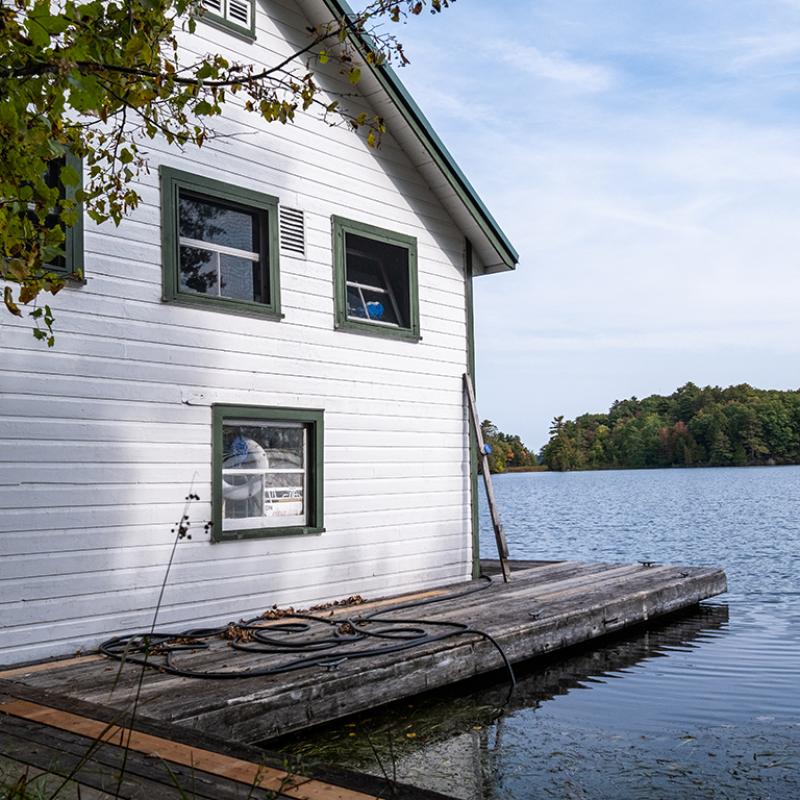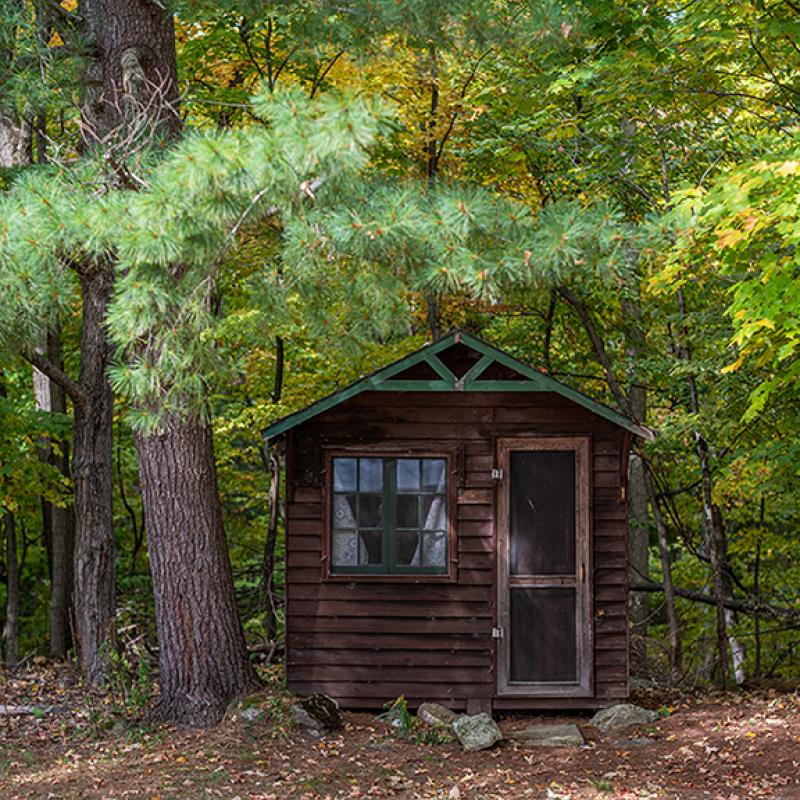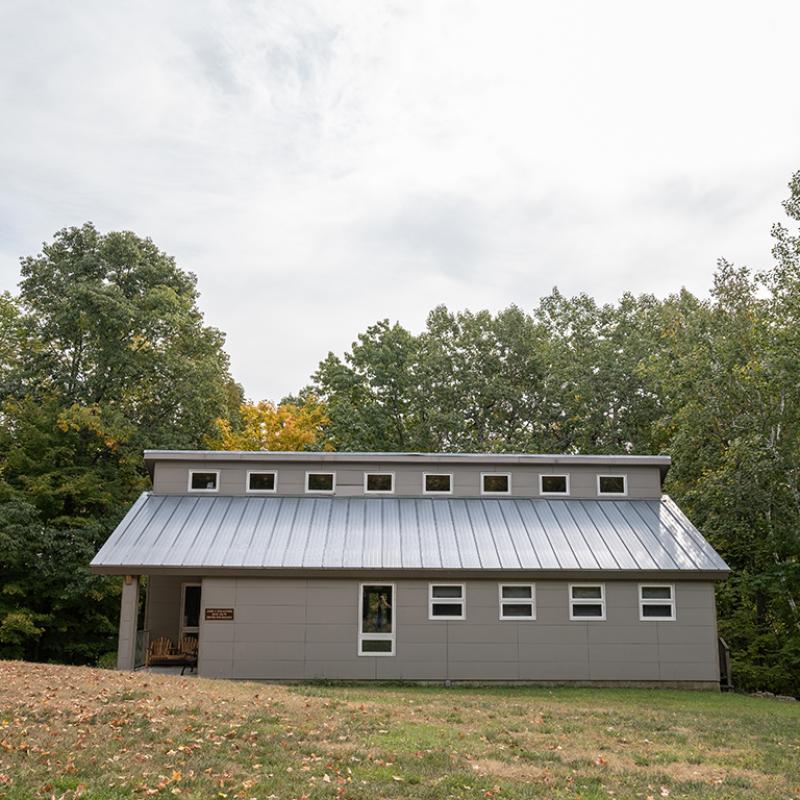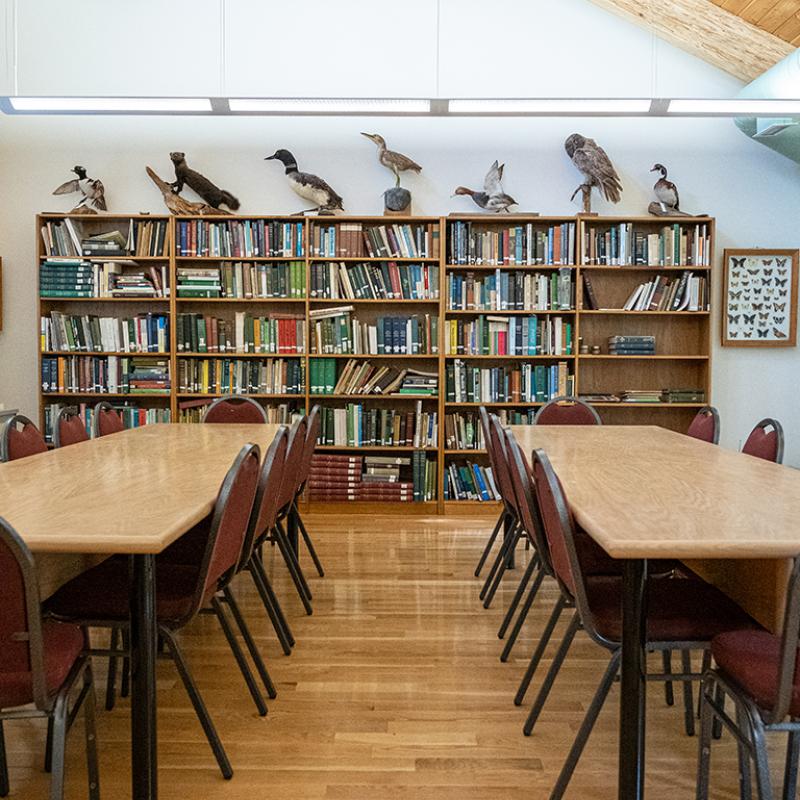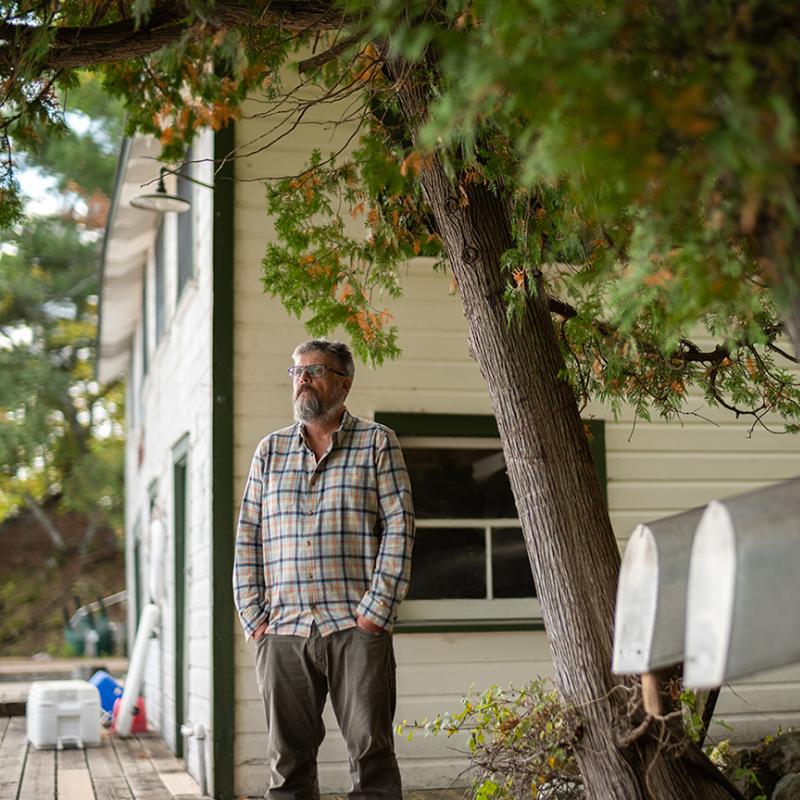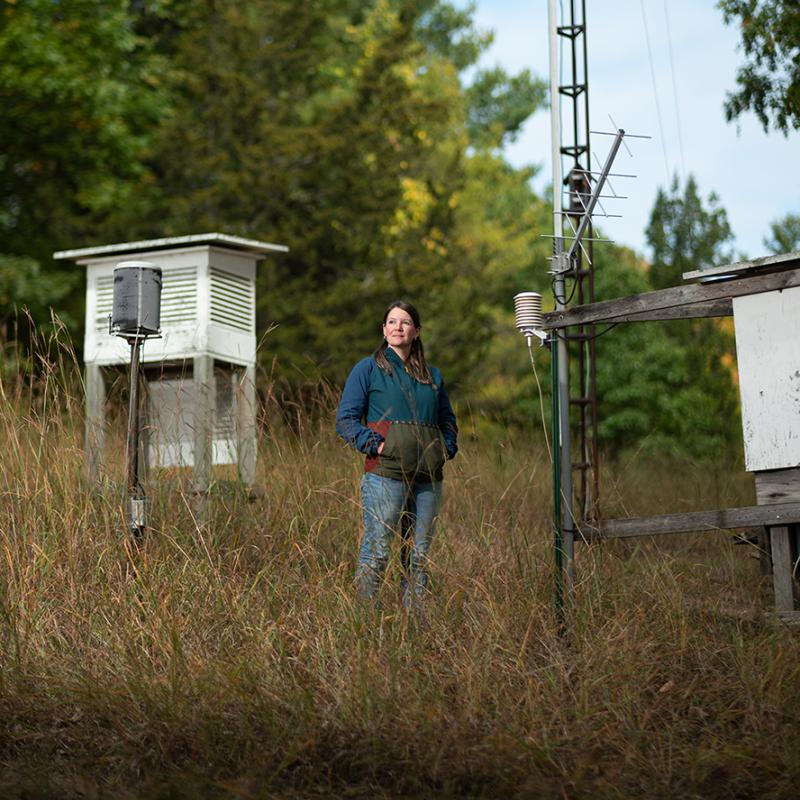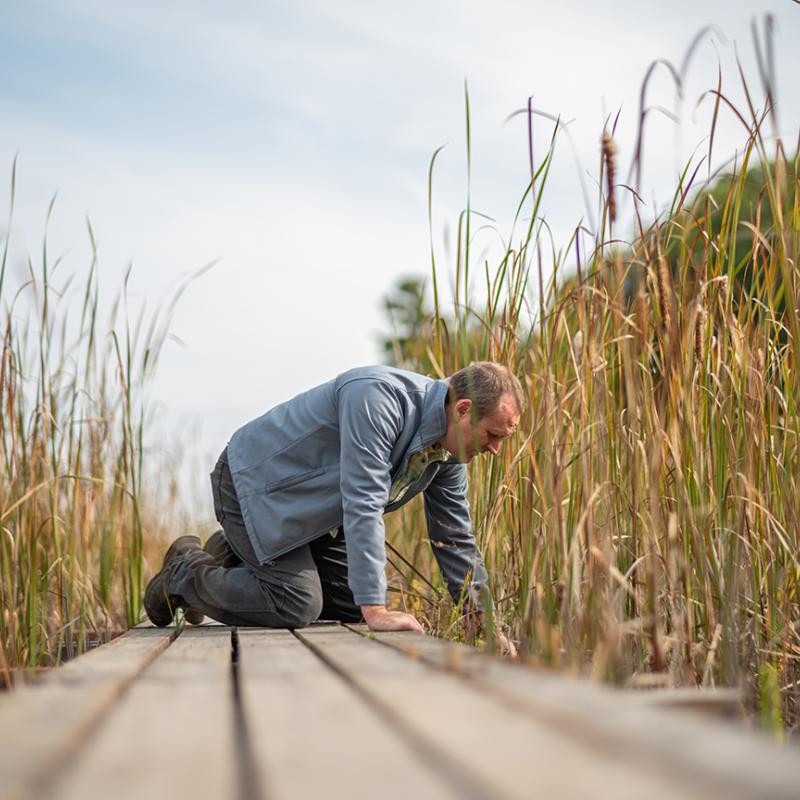In the spring of 2023, Queen’s celebrated its best-ever showing in the Times Higher Education Impact Rankings, finishing third in the world and first in North America when it comes to making progress toward the United Nations’ Sustainable Development Goals. It’s an impressive showing, considering that the field included more than 1,700 universities. But what exactly does it mean?
There are 17 Sustainable Development Goals (SDGs) in total – including everything from eradicating hunger to achieving gender equality to finding affordable clean energy sources. All of the U.N. member states have committed to achieving them by 2030.
Principal Patrick Deane described the SDGs as a “rallying point” that will enable the university to become a “university for the future” and achieve its vision of being a community dedicated to solving “the world’s most significant and urgent challenges.”
The Queen’s University Biological Station is just one example of what such a rallying point can look like – we sent writer Jordan Whitehouse there to tell its story.
The place has always been a living lab for researchers and students with questions big and small about ecology, evolution, conservation, and environmental science.
The rain has finally stopped as I pull onto the long gravel road just past the hamlet of Chaffey’s Lock. A dozen wild turkeys skirt into the bush.
Winding through thick coniferous and deciduous forest, the road soon passes an experimental collection of invasive plants in small Plexiglas domes. Further on are fishing boats and a man on an orange tractor motoring past, giving a wave.
Eventually, the road ends and opens onto a clearing on the north shore of Lake Opinicon. The sun pokes through the trees, shimmering everything in green, as about 30 buildings come into view. Some are cottages and bunkies, one of which welcomed a Giller Prize-winning novelist last summer. Others contain research labs, teaching spaces, and conference rooms. There is also a workshop, a library, a boathouse, and an herbarium containing over 140,000 plant specimens.
Welcome to the Queen’s University Biological Station (QUBS).
QUBS (pronounced “cubes”) has been here since 1945, though the property is a lot bigger now than in those early years. These days, dense forest, nine lakes, and the rocky crags of the Canadian Shield run for about 3,400 hectares.
The place has always been a living lab for researchers and students with questions big and small about ecology, evolution, conservation, and environmental science. Now, of course, a major focus is the rapidly changing planet.
Yet while biologists make up most of QUBS’ users, over the past decade more non-biologists have been showing up – some of them with the same concerns about climate change and human assaults on the environment as the biologists.
The heartbeat of all this is the Raleigh J. Robertson Biodiversity Centre. QUBS’ administrative staff have their offices here, but this is also where students, researchers, and other visitors eat together in the large dining room, forging the type of connections that make QUBS tick. Today, QUBS Director and Queen’s Biology Professor Stephen Lougheed meets me on one of the centre’s two screened porches.
Stern but frequently flashing a smile, Dr. Lougheed wears dark glasses, an aqua blue T-shirt, hiking pants and shoes. Over the next couple of hours out here and on a tour, he tugs on his grey beard and talks all things QUBS – the history, the geography, the infrastructure, the mandate, the future.
But one theme he returns to a few times is the collaboration that happens here and the importance of working together to address the environmental crisis.
Not everyone at QUBS is focused on that crisis, but many are. About 50 per cent of the researchers working at QUBS are from Queen’s, but the rest are from institutions elsewhere in Canada and around the world. “That is really important, because no single university has all the answers,” says Dr. Lougheed. “And so, what that does is create a really convivial, dynamic intellectual atmosphere where there’s lots of cross-pollination of ideas.”
He points to one of his own recent research projects as an example. It includes people from the University of Toronto, the Invasive Species Centre, Thousand Islands National Park, the River Institute, the First Nations Technical Institute, and the Mohawk Council of Akwesasne Environment Program. Using state-of-the-art environmental DNA tools, researchers can get a more accurate picture of all the species that live in a body of water than if they used more traditional methods. One application of these tools could allow municipalities to see exactly where invasive species are and aren’t so that preventative measures can be put in place.
“If you want to move the needle on sustainability, if you want to move the needle on buy-in, if you want people to be involved directly and feel proprietary about a space, then you must embrace all these vantages. And that’s what we try to do.”
Another theme Dr. Lougheed returns to are those non-biologist visitors to QUBS. Geographers, engineers, health-care workers, visual artists, writers, and many others have used this space. About a month ago, for instance, a group of doctoral students from a variety of disciplines and from across Ontario were here for an annual thesis writing retreat. Next year, a U.K. artist will be an artist-in-residence.
In a Zoom chat, Dr. Lougheed told me this cross-disciplinary and collaborative focus has been something he has always tried to encourage at QUBS, but especially now. Why? In short, he said, because the world is on fire – both literally and metaphorically – and we need everyone’s help to put it out. “If you want to move the needle on sustainability, if you want to move the needle on buy-in, if you want people to be involved directly and feel proprietary about a space, then you must embrace all these vantages. And that’s what we try to do.”
One of those non-biologist users is Laura Thomson, an assistant professor in Geography and Planning at Queen’s and the Canada Research Chair in Integrated Glacier Monitoring Practices. This isn’t where you would normally expect to find a glaciologist, and yet this winter Dr. Thomson could be spending a lot more time around here.
Her research usually takes her to Nunavut, where she uses tools like ground-penetrating radar and automatic weather stations to understand how and why the Arctic is changing. But she needs a place to test some of those tools before she heads north, and the undisturbed snowpack and lake ice at QUBS could be the perfect place to do that.
QUBS could also be the ideal place for understanding the impact of a changing climate right here, she says. “Snow doesn’t get a lot of attention in this part of the world, but as snow changes, understanding the cascading effects of that could be very important. What does that mean for ecology, for instance? I’m not an ecologist, but I think this is one area where the potential for collaboration exists.”
“There is so much potential for multidisciplinary collaboration at QUBS, and that is so important when we talk about Earth as a system and issues like climate change.”
Another area could be related to the solar-powered climate stations set up across the property. This fall, Dr. Thomson plans to bring geography graduate students to QUBS to work on developing an annual climate report that could be used by ecologists to understand the changes happening here.
“There is so much potential for multidisciplinary collaboration at QUBS, and that is so important when we talk about Earth as a system and issues like climate change,” says Dr. Thomson. “Most solutions don’t exist in individuals. They come through collaboration and thinking laterally, outside the box. That’s how you push the envelope, you grow.”
Robert Colautti is one ecologist who might benefit from the climate data Dr. Thomson’s students would synthesize. He is an associate professor of evolutionary ecology and ecological genomics at Queen’s, where his research focuses on how species respond to environmental change. Right now, he is looking at invasive plants, ticks, and tick-borne diseases, and asking how some of them thrive so well.
Those small Plexiglas domes I drove by earlier are part of Dr. Colautti’s plant experiments. Inside are two notorious invaders, garlic mustard and dog-strangling vine. He also has an even larger experimental site of perhaps the most famous plant invader in North America, purple loosestrife.
“This is the kind of scale that you can’t really do without a field station like this,” says Dr. Colautti. “You can only get so far with a lab experiment. At some point, you actually have to get outside and see what’s happening.”
Last year, Dr. Colautti and his colleagues published a paper that combined data from that purple loosestrife site with records from the QUBS herbarium and similar records from other herbaria across the continent. “Basically, what we found is that as purple loosestrife spread across North America, it evolved changes in flowering that match the local climate,” says Dr. Colautti. “In other words, the genetic changes allowed them to spread into new climates.”
“You can only get so far with a lab experiment. At some point, you actually have to get outside and see what’s happening.”
It’s a somewhat similar story with ticks. As the climate has warmed, ticks like the Lyme disease-carrying black-legged species have spread north. But one thing researchers don’t know much about is how the ticks’ microbes have changed as the environment has changed.
Recently, however, using ticks found at QUBS, Dr. Colautti’s team showed that new genomic technologies can be used to see not only more microbes than by using traditional methods, but also microbes they may not have known were there in the first place. “So, now the idea is to expand our sample and start looking for new things that might be moving into Canada with the ticks as the climate continues to change,” says Dr. Colautti.
Although he didn’t know it at the time, Omar El Akkad, Comp’05, could have played a minor role in Dr. Colautti’s tick research. The journalist and Scotiabank Giller Prize-winning novelist was at the station last summer for QUBS’ month-long writer-in-residence program. At one point, a student introduced herself. “She said she worked with ticks and asked if I wanted to help out,” remembers Mr. El Akkad. “‘Isn’t Lyme disease a concern?’ I asked. ‘Yes, absolutely,’ she said. ‘Do you want to come out?’ And I’m like, ‘Um, no not really.’”
Mr. El Akkad laughs about the interaction now, but he did end up exploring the property with QUBS researchers, albeit at a safe distance. Later, for instance, he hopped onto a UTV and then into a boat with Dr. Lougheed, who was fixing a few of the climate stations. “It was just an overall terrific experience to be there,” he says. “Just a beautiful, gorgeous property.”
“… a lot of writing is just about not doing anything else, and so the negative space that was provided for me at QUBS was the biggest component of getting that work done.”
But it was also a productive experience, he says. From his lodging, in one of QUBS’ bunkies, Mr. El Akkad would head to the dining hall after everyone had gone to bed. There, as the raccoons and red foxes awoke outside, he would write the first 20,000 words of his next novel. “For me, that is a huge number,” he says. “But a lot of writing is just about not doing anything else, and so the negative space that was provided for me at QUBS was the biggest component of getting that work done.”
It did help that he was at QUBS in particular. That novel will be an extrapolation of where the climate is headed as a result of what humans have done, he says. “And so being in an environment where people are talking about the shifts they are seeing from the data they are collecting was hugely impactful. It was the perfect place for me to start on this novel.”
Back on the screened porch of the biodiversity centre, a pine siskin chirps above Dr. Lougheed. “That’s odd,” he says. “You usually see them here in the winter, but it’s been an unusual year.”
Before we head out on a tour of the property, I ask him about his earlier Zoom comment about the world being on fire and needing everyone’s help to put it out.
He takes a rare pause.
“We need more people to be more literate about the way ecosystems function,” he says. “When you think about community ecology, you’re talking about trying to understand how thousands of individual species interact with one another – microfungi, bacteria, viruses, plants, animals. And then when you say, ‘OK, climate change is here and is continuing to come, let’s predict what’s going to happen.’ That is probably one of the biggest challenges you could possibly imagine. But there are lots of people who are trying to wrestle with that. We’re doing that kind of work. It’s hard, hard work. But we’re trying.”
